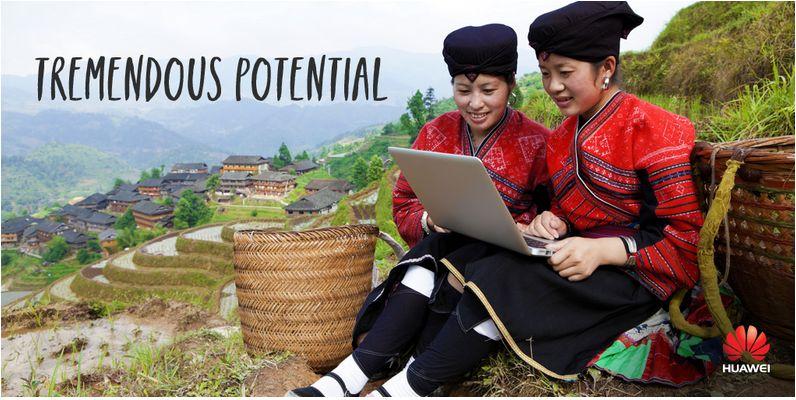
Huawei Technologies rotating CEO Ken Hu shared suggestions to avoid digital divide in the society.
He said 4 billion people lack internet access. Though mobile phones are nearly universal, about 12 percent of the people in emerging economies have a broadband data connection.
Most unconnected people live in countries with underdeveloped economies and poor digital infrastructure. Yet tremendous growth potential could be unlocked by improving connectivity. With the right ICT, and policies that support innovation and fair competition, countries can help connect the world’s unconnected populations and narrow the digital divide.
The focus should be on developing broadband infrastructure with wider coverage and faster speeds. Countries must view broadband as critical national infrastructure that supports economic growth and raises living standards.
One effective way to create this network infrastructure is through Public-Private Partnerships, or PPPs. Successful examples can be seen in countries such as Malaysia, where regulators built a framework that ensured competition and equal access, lowered the cost of digital entry for citizens, and fostered innovation and competition among service providers.
As networks are being rolled out, telecoms operators should keep costs low by sharing optical fiber and infrastructure with power companies and other utilities. Burying fiber optic cables and conduits underground typically represents 30 percent to 40 percent of total deployment cost, and can run as high as 70 percent. These high costs ultimately make internet access more expensive to end users.
Telecom regulators should also adopt new mechanisms for allocating radio spectrum in a way that increases supply while reducing cost. This is urgent, since most countries will need to increase their available spectrum by anywhere from 50 percent to 100 percent over the next five years. That’s the rough timeline for commercial roll-out of fifth-generation mobile technology, or 5G, which will usher in a host of new digital services and business models. Spectrum is the basis for ultra high-speed mobile broadband, so it’s a vital part of digital infrastructure. But it can account for up to 20 percent of the cost of a broadband connection – again, driving up access costs for the end user.
Another step toward closing the digital gap is the development of applications. In developing countries, apps drive demand for connectivity and create new business models. M-Pesa, an app launched by Vodafone in 2007, lets people with no bank account send and receive money through their mobile phones. M-KOPA, in Kenya, helps households with no electricity purchase their own solar power systems by making daily micro-payments with an app on their cell phone.
When it comes to application development, the government’s main role is to ensure a level playing field that allows entrepreneurial companies to devise innovative new solutions without fear of either monopolistic competitors or excessive regulation. A laissez-faire approach gives entrepreneurs the freedom to create apps that benefit local users.
Connecting the unconnected is a mission with no single solution. It requires governments, operators, technology providers, and app developers to work together. Technological innovation, infrastructure sharing, cheaper and sufficient spectrum supply and apps that improve people’s lives are necessary steps on the road to digital inclusion. Together, they will help bring about the connectivity that delivers prosperity and growth in the years ahead.
The article first appeared in social media website LinkedIn





